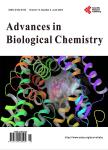Molecular cloning and characterization of an ECTO-NOX3 (ENOX3) of <i>Saccharomyces cerevisiae</i>
Molecular cloning and characterization of an ECTO-NOX3 (ENOX3) of <i>Saccharomyces cerevisiae</i>作者机构:Department of Biology Valparaiso University Valparaiso USA MorNuCo Inc. Purdue Research Park West Lafayette USA
出 版 物:《Advances in Biological Chemistry》 (生物化学进展(英文))
年 卷 期:2013年第3卷第5期
页 面:505-511页
学科分类:1002[医学-临床医学] 100214[医学-肿瘤学] 10[医学]
主 题:Age-Related NADH Oxidase (arNOX) ECTO-NOX3 TM9 Superfamily of Transmembrane Proteins Molecular Cloning Saccharomyces cerevisiae
摘 要:Exfoliated ECTO-NOX3 (ENOX3) proteins, are members of the human TM9 superfamily of transmembrane proteins that generate superoxide, are present in blood and other body fluids, and increase activity with age beginning about age 30, hence age-related NOX (arNOX or ENOX3). A yeast deletion library was screened based on NADH fluorescence using a 384 well plate assay to identify a yeast isolate lacking a previously identified cell surface oxidase exhibiting an oscillatory pattern with a period length of 26 min and capable of generating superoxide. The cDNA was cloned from a yeast over expression library using NADH as an impermeant substrate with analysis by Fast Fourier Transform and decomposition fits. The objective was to identify and sequence an ENOX homologue in Saccharomyces cerevisiae with a 26 min rather than a 24 or 25 min period length. The finding identified YER113C as the yeast ENOX3 protein with a 26 min period and capable of generating superoxide. The encoded protein was expressed in bacteria and characterized. Gel slices of expressed proteins revealed a protein of ca. 81,545 kDa with properties paralleling those of human ar-NOX (periodic NADH oxidation, protein disulfide thiol interchange, inhibited by mammalian arNOX inhibitors and superoxide production inhibited by superoxide dismutase). The YER113C sequence exhibited a 44% similarity and a 26% identity with the mammalian ENOX3 SF4 (arNOX SF4) of the TM9 superfamily of transmembrane proteins1. The YER113C deletion mutant lacked arNOX activity.



